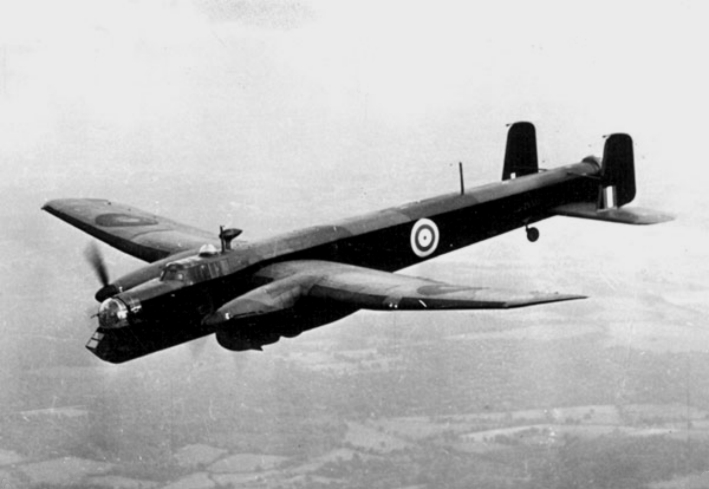During the Second World War the seas around the North Ayrshire coast saw its share of tragedy: from the sinking of the HMS Dasher to the scuttling of U-33. One of the lesser-known stories is the crash of a Whitley bomber, which crashed into the sea 2 miles off Saltcoats harbour in 1943, with the loss of 3 lives.

The crew of Armstrong Whitworth Whitley Z9362 of 24 Operational Training Unit were being prepared for active service. They were tasked with undertaking a night navigation exercise and at around midnight on Saturday 1st May/Sunday 2nd May 1943 they took off from Honeybourne, Worcestershire, England. Five airmen were onboard, and with the constant threat of Luftwaffe intruders they could have been engaged by an enemy fighter aircraft at any time during the flight. Approximately one hour and fifty minutes after take-off, white smoke and sparks were seen to be coming from the port engine due to an internal glycol (coolant) leak. The engine stopped and the captain ordered the crew to prepare to abandon the aircraft. Half an hour later the starboard engine stopped working as it had been operating beyond its specified limit, and the aircraft went into a spin before it crashed into the sea.
Sergeant EHG Dyer, who had been in the rear turret, baled out and was met by a young 15 year old local lad John McCallum and his dad. They met Sergeant Dyer on the road bridge at the railway station and gave him directions to the police station in Green Street.
David Shedden, a fisherman based at Saltcoats harbour, rowed out with a companion into the darkness towards the sound of calls for help, and rescued Sergeant LN Atkinson who had baled out and had come down in the sea. He was a New Zealander who had travelled to England to work in forestry and who had transferred over to aircrew duties. David was a soldier in World War One who saw combat with the 5/6th Battalion, Scottish Rifles (more commonly known as the Cameronians). Tragically Flying Officer J.C North-Lewis, Sergeant E.J Beer and Sergeant D.E Watts were killed. Sergeant Watts was never found, and it is unknown if his remains are still in the aircraft wreckage.
The Crew
- Flying Officer J.C North-Lewis – Pilot – Killed, body recovered
- Sergeant E.J Beer – Navigator – Killed, body recovered
- Sergeant L.N Atkinson – Air Bomber – Baled out & rescued from the sea
- Sergeant E.H.G Dyer – Air Gunner – Baled out & landed on land
- Sergeant D.E Watts – Wireless Operator/Air Gunner – Killed, Body never found
Memories of the Crash
The story of the crash has fascinated many in the local area and beyond. There are also still some who were alive on the night of the crash.
You can read more about Local People and the Whitley Bomber Crash if you’d like to find out more.
Video Interview With John & Ian McCallum
You can also watch this wonderful interview with John and Ian McCallum, where they tell the story of the fateful crash of Whitley bomber Z9362.
Firstly, Ian McCallum tells the story of what happened on the night of the crash before passing to his father John, who recounts his experience of being there as a young boy in 1943.
This video was on display at our Heritage Centre during in 2025 during the ‘For Our Freedom and Yours’ exhibition. Now, it is permanently available for all to watch on our website!